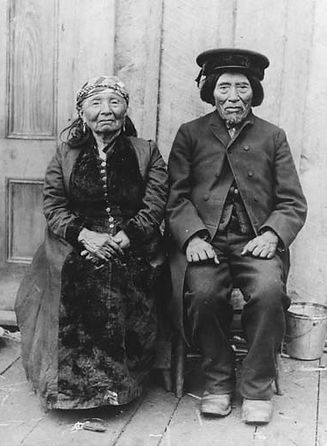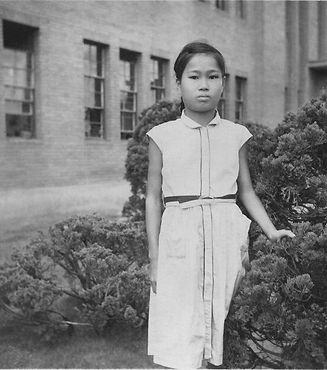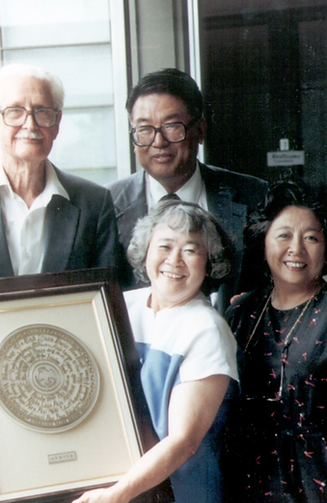
By Denny, Orion O. General Indian Collection no. 564

Sadako at the hospital. Copyright: Sadako Legacy NPO

Floyd Schmoe receiving the Hiroshima Peace Prize, 1988. Courtesy of Densho, the Yanagihara Collection
Peace Park
and
Sadako History
written by Saya Moriyasu
Since time immemorial, this land, now known as Seattle Peace Park, has been home to the Coast Salish peoples, including the Duwamish Tribe, the Dkhʷ'Duw'Absh. Their presence is not something of the past. It is ongoing, vibrant, and resilient. The Duwamish people continue to live, gather, raise families, and care for this land.
Seattle Peace Park sits near the waters of x̌áx̌əʔču, now called Lake Union. In the late 1800s, a Duwamish couple named Cheshiahud and Tleboletsa lived along these shores. Cheshiahud was a respected leader and chief. During a time of escalating violence, exclusion laws, and forced removals, they stayed. Their continued presence was not only an act of resistance. It was a deep relationship to place and an assertion that they belonged here and still do.
The Seattle Peace Park also grew from another act of remembrance. In 1990, Floyd Schmoe, a Quaker, pacifist, and humanitarian, helped transform what had been a garbage-filled, overlooked parcel at the north end of the University Bridge. With community volunteers, he raised money, worked with officials, then cleared debris, planted trees, built paths, and created a place dedicated to peace, nature, and justice.
At its center was a bronze statue of Sadako Sasaki, a young girl from Hiroshima.
Sadako Sasaki was two years old when the atomic bomb was dropped on her city in 1945. She survived the blast but developed leukemia years later as a result of radiation. While in the hospital, she began folding paper cranes. She was inspired by a Japanese legend that one-thousand cranes could grant a wish. She folded more than a thousand. She wished for healing. She wished for peace.
She died at age twelve, but her classmates, still children themselves, carried her legacy forward. They raised money, told her story, and helped build a statue of her in Hiroshima, where she stands, high in the air, holding a crane above her head. That act of collective care became a global symbol of peace. And Floyd Schmoe brought that symbol here to Seattle, bringing the Seattle's Peace Park to fruition in 1990. Since then it has been a place for community members from near and far to visit Sadako and be inspired by her story, fold and drape origami cranes (orizu), and reflect on the hope for world peace.
Floyd Schmoe's peace work was never symbolic. He lived it. During World War II, he took a public stand against the incarceration of Japanese Americans. He worked with the American Friends Service Committee and with students at the University of Washington to help Japanese American students relocate so they could continue their education. He supported families before and after their release, helping them find housing, employment, and legal aid.
After the war, he traveled to Japan not to bear witness to destruction, but to rebuild. He worked shoulder to shoulder with survivors and orphans in Hiroshima and Nagasaki. His peace was humble and relational. It took form in homes, friendships, trees, and parks.
In July 2024, the original Sadako statue at Seattle Peace Park was stolen. It was cut off at her ankles. All that remained are her two bronze feet. Even in that painful moment, something deeper held. The community came together once again. Not just to replace what was taken, but to build something new around what endured.